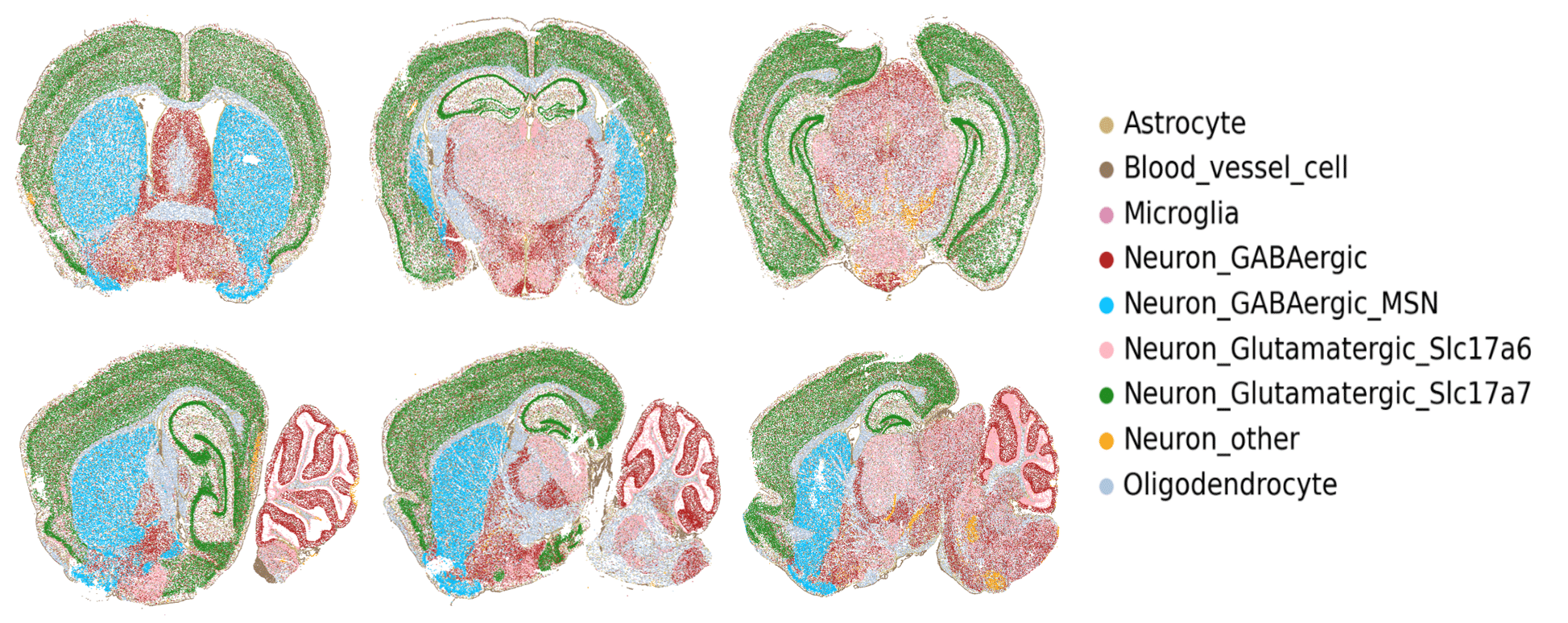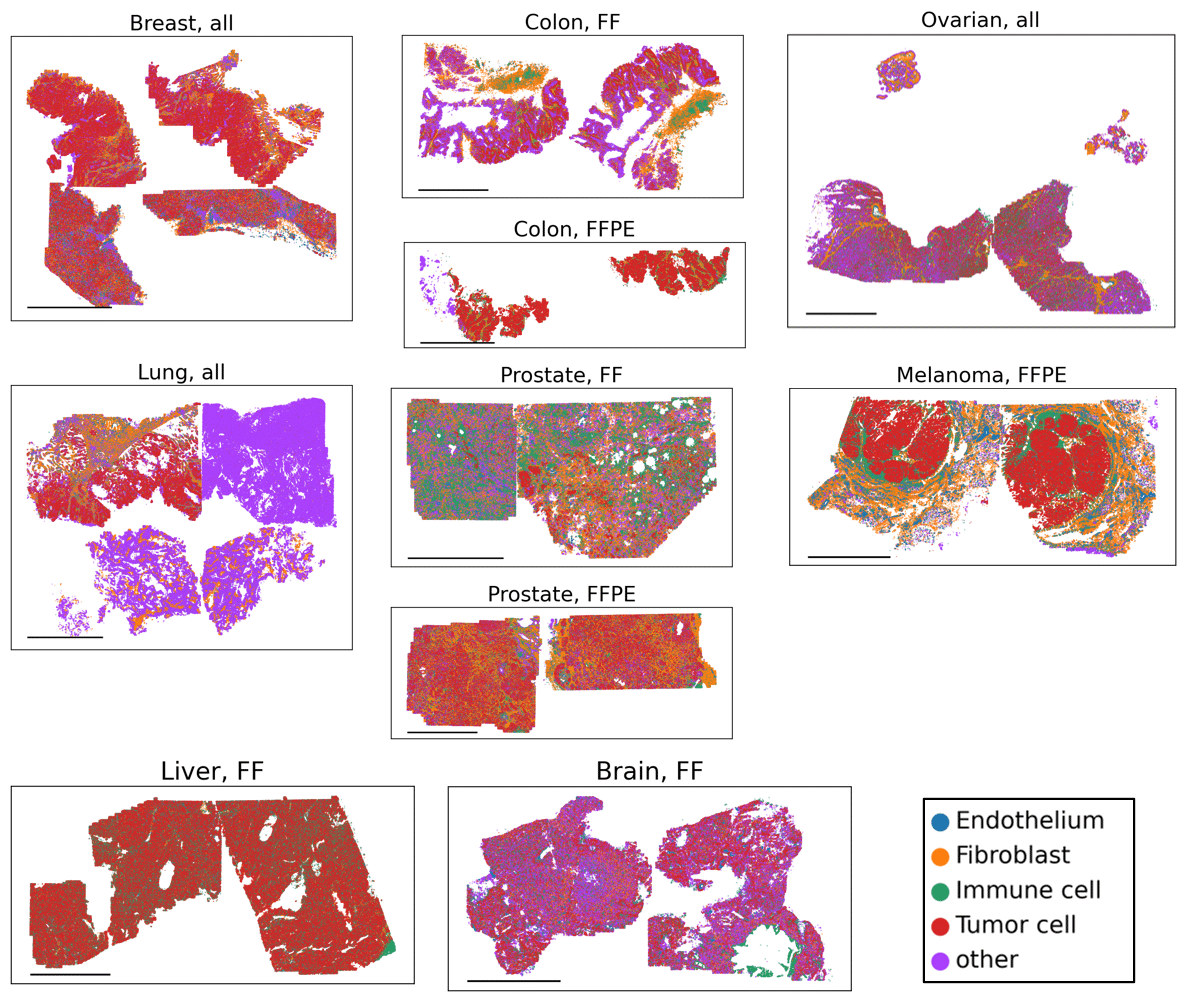While spatial genomics is still a relatively new field, it has already transformed how researchers analyze and characterize different cells, tissues, and organs, which will impact our understanding of human health. One of the main reasons for its impact is the power of spatial genomics to describe the complexity we see in many areas of cell biology.
Unlike in many lab experiments, cells in the body are not isolated or in a constant, controlled environment – they are communicating with their neighbors and reacting accordingly. Two examples of complex arrangements of cells are the brain and the microenvironment of solid tumors. Both tissue types have multiple layers of complexity. There aren’t just a vast number of cells. The brain, for example, is composed of millions to billions of cells, but there are also multiple different cell types, each with a distinct function and gene expression pattern. Brain cells are arranged in three-dimensional space, forming elaborate networks and neighborhoods that are precisely regulated by a constant stream of signals coming from direct cell-to-cell interaction, soluble mediators, or outside effects. To fully understand how the tissue functions, or how it may adapt or react to disease or therapeutics, you need a full appreciation of how these layers of complexity interact in a spatial context.
This incredible amount of complexity can feel daunting and selecting the right genes to study can feel overwhelming, especially to researchers who are new to the field. Vizgen aims to make spatial genomics accessible to as many researchers as possible – the MERSCOPE® Platform itself provides an all-in-one solution with everything a lab needs to begin running spatial experiments. As the field grows, we encourage collaboration and idea sharing through the release of publicly available datasets, such as the FFPE Human Immuno-oncology Data Release. In fact, we’re proud to say that this is the world’s largest single-cell spatial genomic public dataset and includes 26 samples, over 10 million cells, and nearly 6 billion transcripts.
As part of our effort to increase the accessibility of spatial genomics, we wanted to provide a convenient off-the-shelf solution as a starting point for scientists who are looking to add spatial genomic capabilities to their research. In April, we announced the launch of the first two predesigned gene panels – the PanNeuro Cell Type and PanCancer Pathways panels – enabling cellular and subcellular analysis of neuronal signaling, activity and connectivity, and characterization of tumor behavior across multiple different types of cancers.
Both panels contain a curated list of 500 genes, constructed from published literature, recognized databases, and the publicly available Vizgen MERFISH datasets specifically selected for the greatest combinatorial power to discriminate the different cell types in the tissue of interest.
The PanNeuro Cell Type Panel features a list of genes built to identify all major cell types and established neuron subtypes in the mouse brain. This comprehensive cell typing panel was constructed using the Mouse Brain Atlas and published Vizgen Mouse Brain datasets, enabling the resolution of neuronal and non-neuronal cell subtypes, and the identification of all major cell types including astrocytes, ependymal cells, immune cells, neurons, oligodendrocytes, peripheral glial cells, and vascular cells. The collaboration between Vizgen and the Allen Institute for Brain Science, which utilized the MERSCOPE Platform and was instrumental in the creation of this predesigned panel, is covered in a previous blog post here.

Figure 1: The spatial distribution of major cell populations in the mouse brain.
The PanCancer Pathways Panel features a list of genes targeting canonical signaling pathways of cancer. Constructed using recognized oncology databases including OncoKBTM, MutSig, The Cancer Genome Atlas and Hallmarks of Cancer to ensure inclusion of critical cancer genes, the panel provides the ability to characterize tumor behavior at cellular and subcellular levels across multiple different types of human cancers.
The 500 carefully selected genes in the panel include tumor-suppressors, proto-oncogenes, relevant gene hits from cancer-specific databases, immune interaction genes, and genes from canonical pathways of carcinogenesis (RAS/RTK, PI3K, NOTCH, MYC, Cell Cycle, HIPPO), as well as cell type markers to identify healthy and disease states. The PanCancer Panel was used to generate the data for a scientific poster presented by Vizgen at this year’s AACR conference, covered in our most recent blog post.

Figure 2: The spatial exploration of distinct cell clusters across diverse patient-derived tissues using the PanCancer Pathways Panel.
Oncology researchers can apply for the new Vizgen grant program which will award the winner with access to a MERSCOPE® Platform single-cell spatial analysis Lab Services project leveraging the new PanCancer Pathways Panel.
These new predesigned gene panels for MERSCOPE offer a powerful, rapidly available method to identify and accurately characterize cells across the mouse brain and interrogate core cancer biology across many different human cancer types to explore their cellular spatial distributions and cell interactions.
With the development of more predesigned panels planned for future release, Vizgen is furthering our mission to expand spatial transcriptomics globally. We’re proud to be driving the momentum as this emerging new research field grows and takes shape.